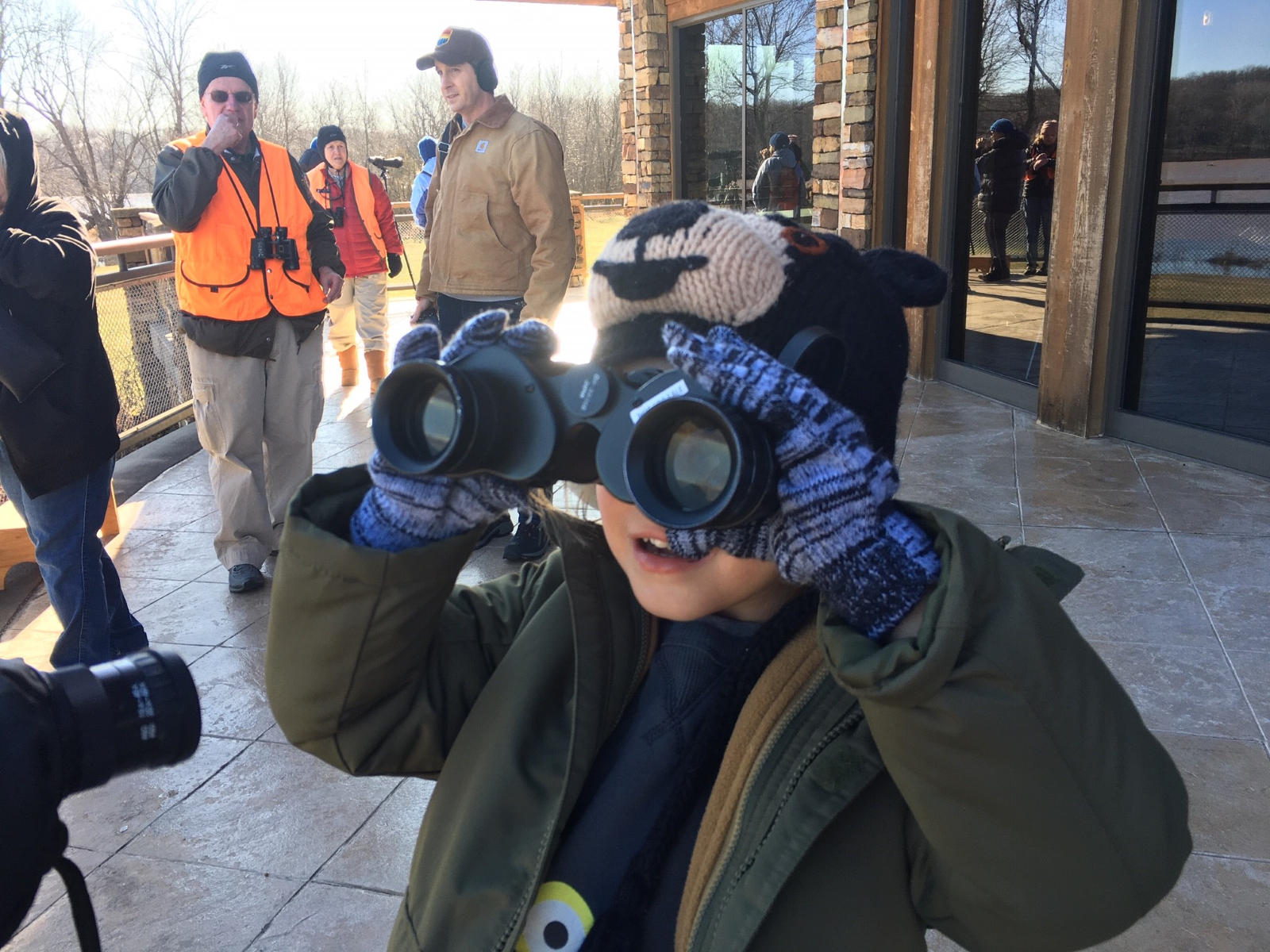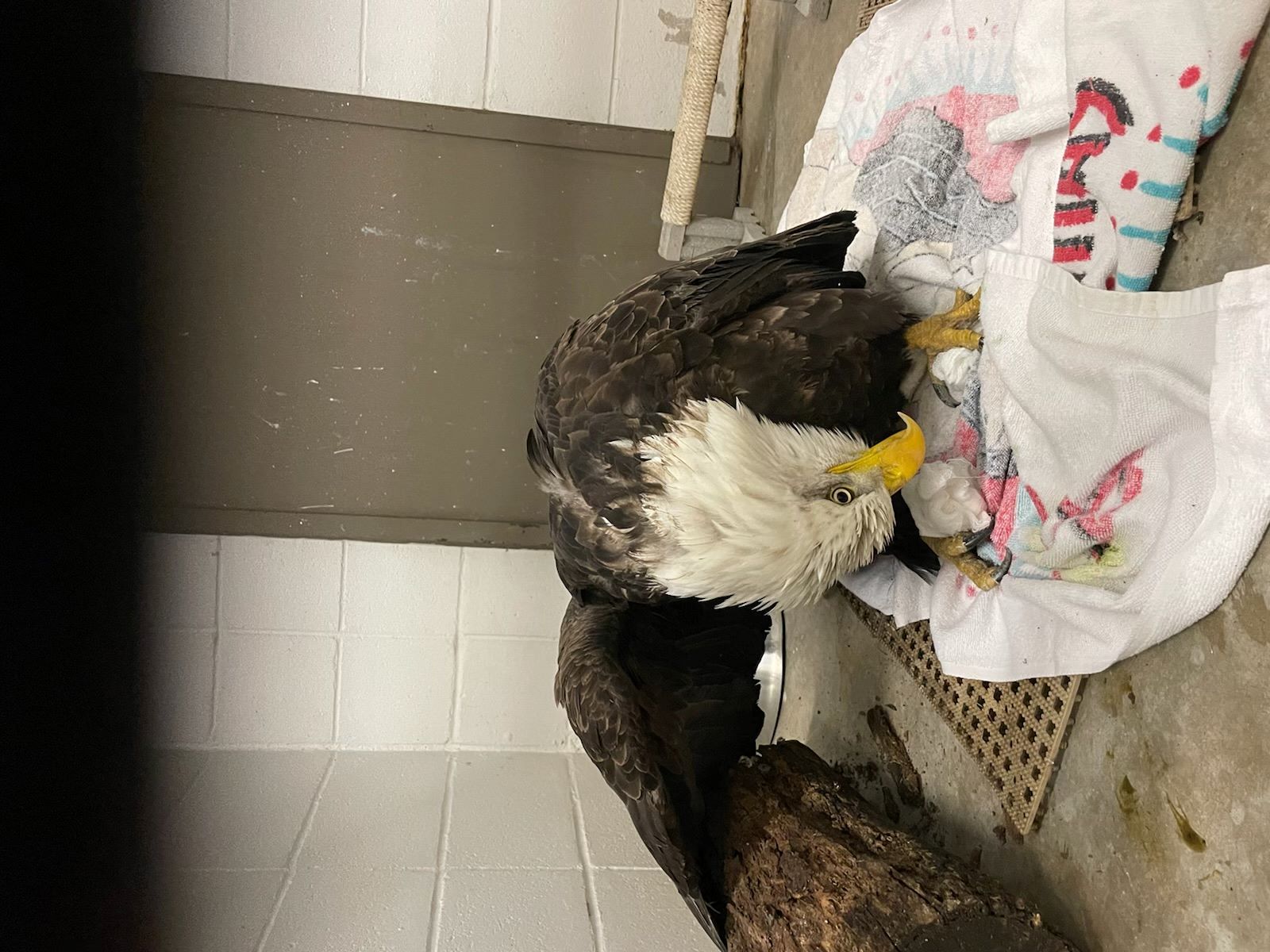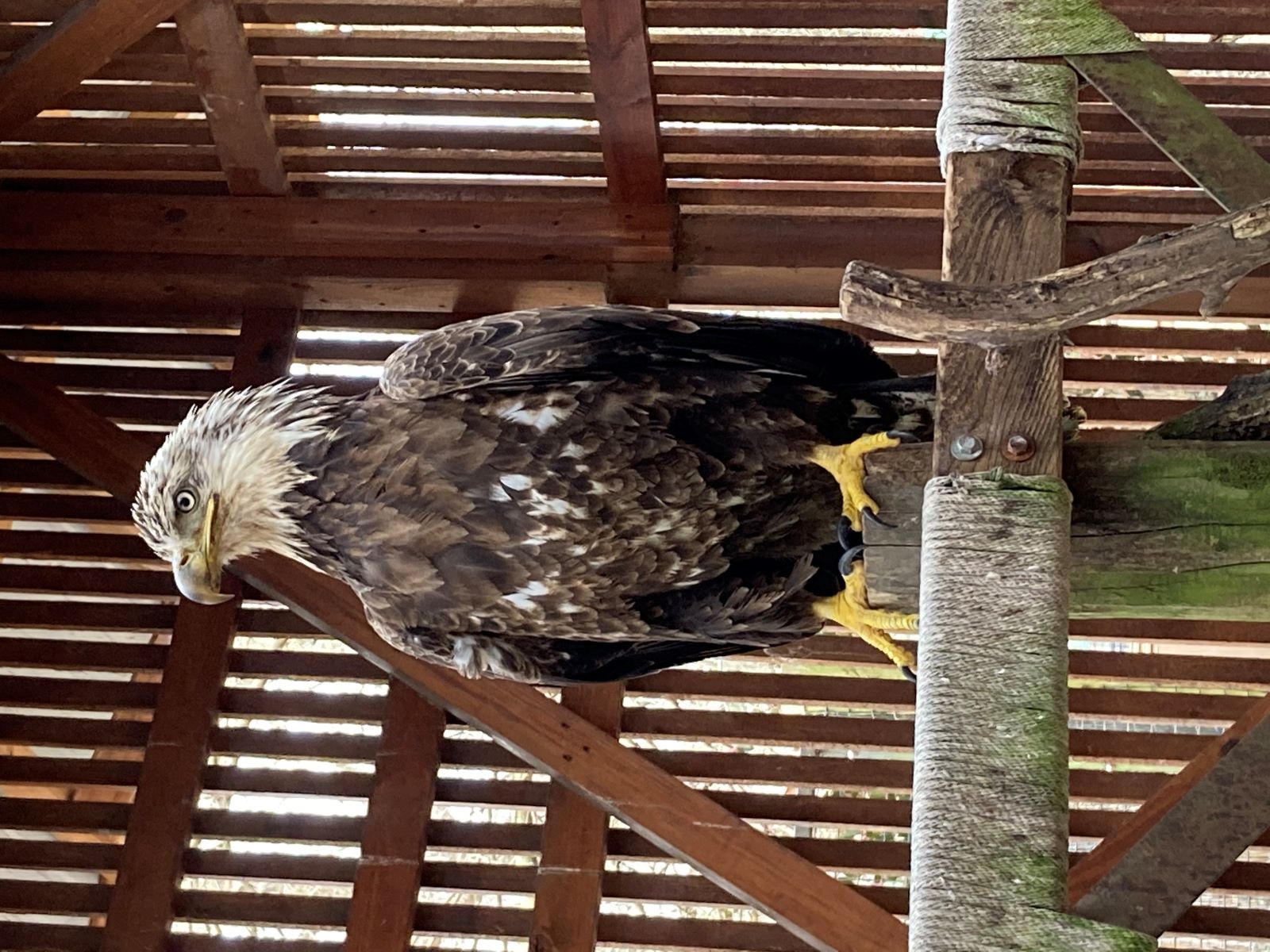The annual celebration of a bird once endangered despite its status as a national symbol returns this weekend to the Springfield Conservation Nature Center.
In its 29th year, Eagle Days takes place Saturday and Sunday, Jan. 20-21, with kids’ craft activities and programs at the Nature Center featuring live bald eagles from Dickerson Park Zoo. Meanwhile, at Lake Springfield Boathouse and Marina, event-goers can use spotting scopes to view wild eagles near the water.
Wherever people go — at least 775 people attended last year — the focus of Eagle Days is education.
“We have a lot of different educational displays both at the Nature Center and the boathouse that talk about the biology of the birds, what kind of grip strength they have, and how long it takes them to reach maturity and their life cycle — things like that so families can learn,” said Morgan Wyatt, Missouri Department of Conservation naturalist and organizer of the event.
Want to go?
What: Eagle Days
When: Saturday, Jan. 20, 10 a.m.-3 p.m. and Sunday, Jan. 21, 12:30-3:30 p.m.. Dickerson Park Zoo docents will give presentations with live eagles every hour on the hour on Saturday, with the first presentation at 10 a.m. and the last at 3 p.m. Sunday presentations will start at 12:30, 1:30, 2:30 and 3:30 p.m.
Where: Springfield Conservation Nature Center, 4601 S. Nature Center Way.
Why look for eagles in the winter?

Eagle Days events are scheduled at conservation areas throughout Missouri this month because January is peak viewing season for seeing the majestic white-capped birds of prey as they overwinter near lakes and rivers, Wyatt added.
“Winter’s still the best time of year to see an abundance of bald eagles because we get the migrating birds coming from the north,” Wyatt said.
Northern lakes and rivers are frozen solid now, so eagles fly south to find fish, she explained.
Besides watching the raptors soar over Lake Springfield, Eagle Days participants can also get up-close views of eagles back at the Nature Center auditorium, where zoo docents will present live eagles during hourly programs.
There, it’s likely they’ll see Phoenix and Truman, Dickerson Park’s “ambassador eagles,” said Joey Powell, public relations and marketing director for the zoo. Once part of the zoo’s raptor rehabilitation program, these eagles live at the zoo because they’re unable to survive in the wild, Powell explained.
For her part, Phoenix was a chick suffering from malnourishment in 1989, when she was rescued at the Schell Osage Wildlife Area and taken to the zoo’s Raptor Rehabilitation Center. Now, Powell said, Phoenix is 34 years old.
Eagles emerge from endangered list

Some 20 years before Phoenix was born, the United States came close to losing its national bird.
According to a U.S. Fish and Wildlife Service report, eagles were declared either endangered or threatened under the federal Endangered Species Preservation Act in 1967. In 1963, four years prior, only 417 nesting pairs of bald eagles were known to exist in the lower 48 states.
The pesticide DDT was the main culprit. Found in the contaminated fish consumed by eagles, the chemical caused the birds' eggshells to thin to the point where they couldn’t withstand incubation, much less hatch. Learn more at the agency’s website.
Eagles produce only one clutch of two or three eggs a year, Wyatt noted, and typically only one chick will make it to adulthood.
DDT was banned in 1972, and bald eagle populations began to grow. In 2007, the Fish and Wildlife Service reports, with at least 9,789 nesting pairs found in the contiguous states, the species was taken off threatened and endangered lists.
Today, there are more than 500 nesting pairs of bald eagles in Missouri alone, Wyatt said. Their comeback story inspires people.
“It’s a success story for not just the Department of Conservation but for everyone who lives in southwest Missouri,” Wyatt said. “It’s great to know that one time we could pinpoint the problem, fix it, and then they come back.”
That’s not to say the bald eagle doesn’t continue to face threats.
Lead poses danger to bald eagles
Illegal shooting is one, even though the federal Bald and Golden Eagle Protection Act has been in place since 1940 and civil and criminal penalties range from hefty fines to imprisonment, according to the Fish and Wildlife Service.
“They’re shot more often than you think,” Wyatt said.

Lead poisoning is another, even though using lead shot to hunt waterfowl was outlawed in Missouri 1991 and its use is prohibited in many state conservation areas.
“Lead poisoning is a big problem, and not just for bald eagles, but any animal that might eat waterfowl (contaminated) by lead shot,” Wyatt said.
At the Dickerson Park Zoo Animal Hospital, veterinarians see too many cases of it among the eagles being rehabilitated there, Powell said.
“Some people think that they have been shot, and that is not the case,” Powell said. “What will happen is they will either eat a fish that has a lead (fishing) lure or they will eat a carcass that has been shot with lead shot.
“That is how the lead poisoning happens,” Powell said, adding that lead poisoning causes neurological problems in eagles.
Thanks to a cheetah cub-naming fundraiser at the zoo two years ago, the hospital now owns a machine that detects lead poisoning in five minutes, so veterinarians don’t have to wait days for test results from outside labs, Powell said.
“That’s helped tremendously in the rehabilitation of the eagles,” she said.
Car collisions are another threat to eagles as well as other raptors.
“A lot of people do not know that bald eagles will eat carrion, including road kill, so they get hit by cars pretty often,” Wyatt said.
Just as hunters can choose to use steel instead of lead shot, as Wyatt suggested, people can make other choices to help eagles and other raptors survive.
Changing human behaviors to help birds

When Powell was growing up, she learned that it was OK to throw biodegradable food like fruit out the car window. Now, she knows better.
“Don’t do that, because when you throw out your banana peel or you throw out your apple, a little critter that’s going to come up and eat that is now food for a raptor,” Powell said. “When a raptor swoops down to get that, they get hit by a car.
“It’s a really simple behavior anybody can change.”
Another way people can help eagles is to report nest sightings to the Missouri Department of Conservation, which monitors the number of nesting pairs in the state, Wyatt said.
Eagle nests are huge, Wyatt said: “If you look up in trees, often sycamore trees near water, you’ll see really big bundles of sticks. Eagles add to their nests every year, so sometimes they can get as huge as a Volkswagen.”

On the other hand, people can also help eagles by not spending too much time near their nests, Wyatt said.
If eagles are disturbed, she said, “They just won’t stay on their eggs as they should or care for their chickens as they should. They get spooked.”
From facts about their vision and grip strength — eagles can see two miles away, and their grip is 10 times stronger than that of humans, Wyatt said — there’s much to learn about them this weekend.
“Mostly, I think it’s important for people to just come and learn about these birds,” Powell said. “The more you learn about an animal, the more you appreciate it and care about its conservation.
“Also, the more interested you become in something, the more you want to share that knowledge with other people and get them outside to see these birds, too.”


